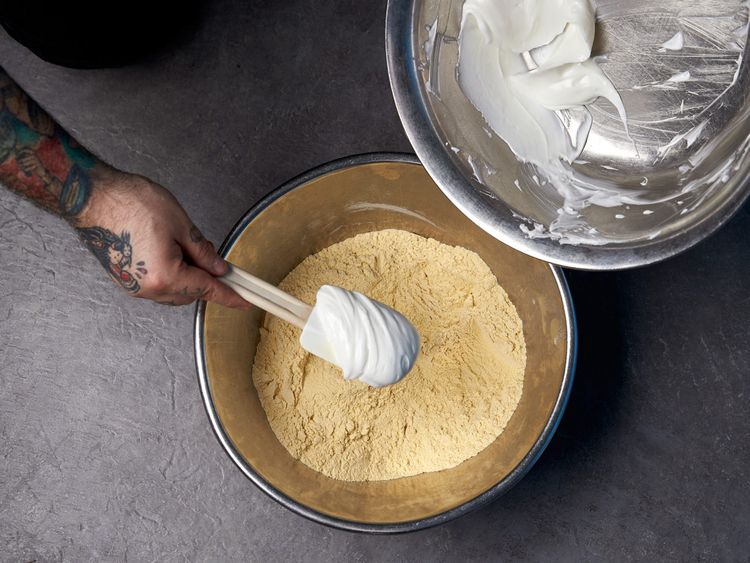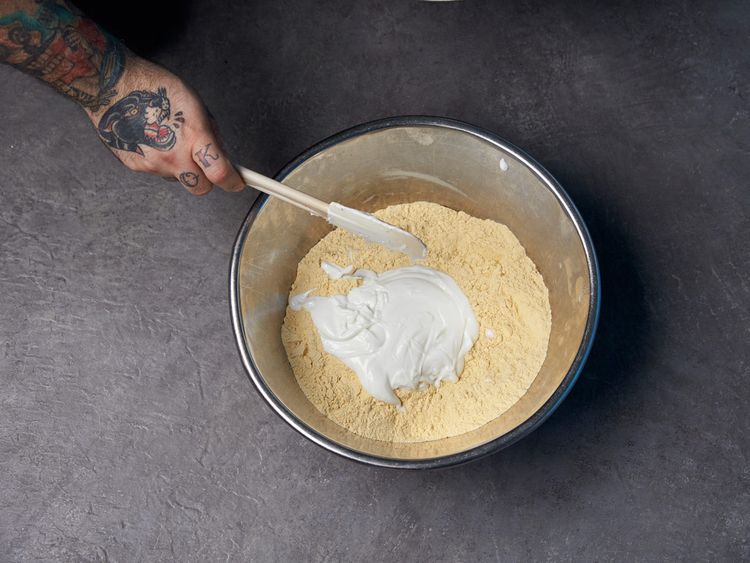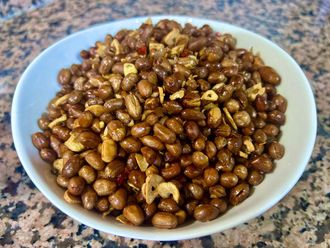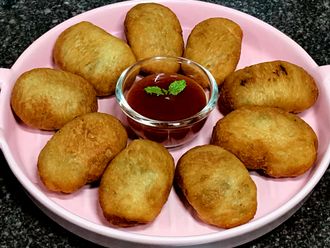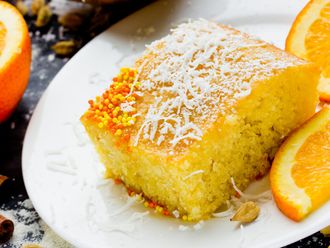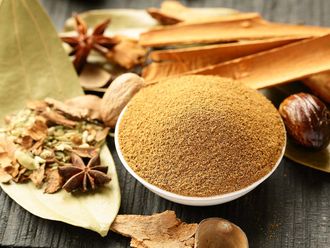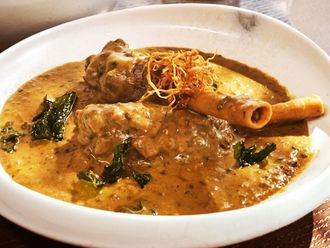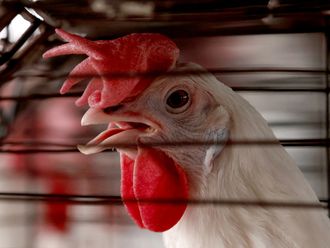
These steamed corn dough treats first enticed human tastebuds over 10,000 years ago – records of early Mesoamericans show this dish was consumed as early as 5000BC. Today, they’re a Mexican staple, both as street food sold by vendors in baskets, but also as a warming festive dish made for big family celebrations and gatherings. Especially on cold winter days, they’re best had with a steaming cup of coffee, explains Chef Guillermo Edmundo Vidales Favela of Maya Mexican Kitchen + Bar at Le Royal Meridien Beach Resort and Spa.
Usually, cooking an entire batch of these takes an assembly line of family members prepping the dough, making the filling and wrapping it deftly in banana leaves or corn husks. Tamales take some skill and technique, but they aren’t impossible to master on your own in a home kitchen.
Equipment
Steamer
Blender
Whisk
Ingredients for Masa
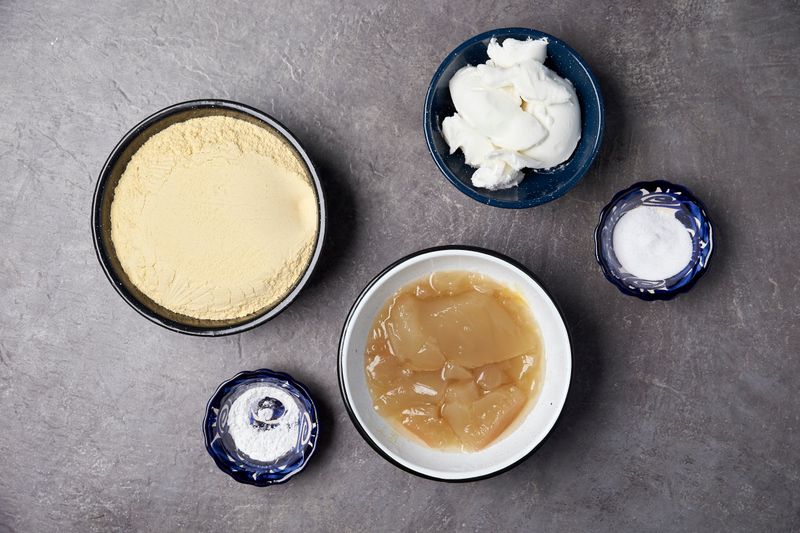
250gm lard or vegetable shortening
500gm of masa flour (ground corn or hominy, treated with limewater solution to make it alkaline)
1 cup of chicken stock
1 tsp of baking powder
1 tsp of sea salt
Ingredients for the filling – Pollo en salsa verde (chicken with green salsa)
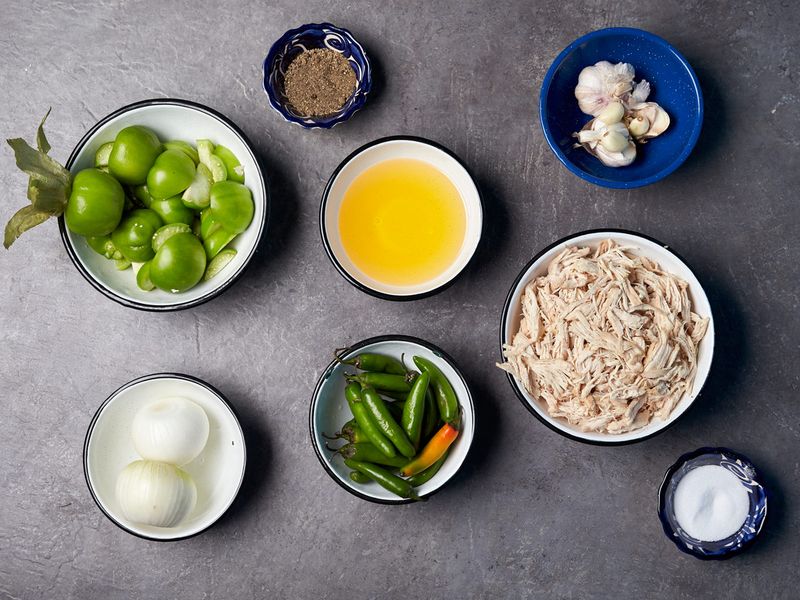
2 pc of chicken breast, cooked and shredded
500gm of tomatillo (green tomatoes), chopped roughly
5 pieces of serrano pepper
2 cloves of garlic
100gm of fresh coriander
½ white onion, roughly chopped
1 tsp of sea salt
1 tsp of crushed black pepper
3 tsp of cooking oil
1 litre of water
To wrap
Banana leaves or corn husks
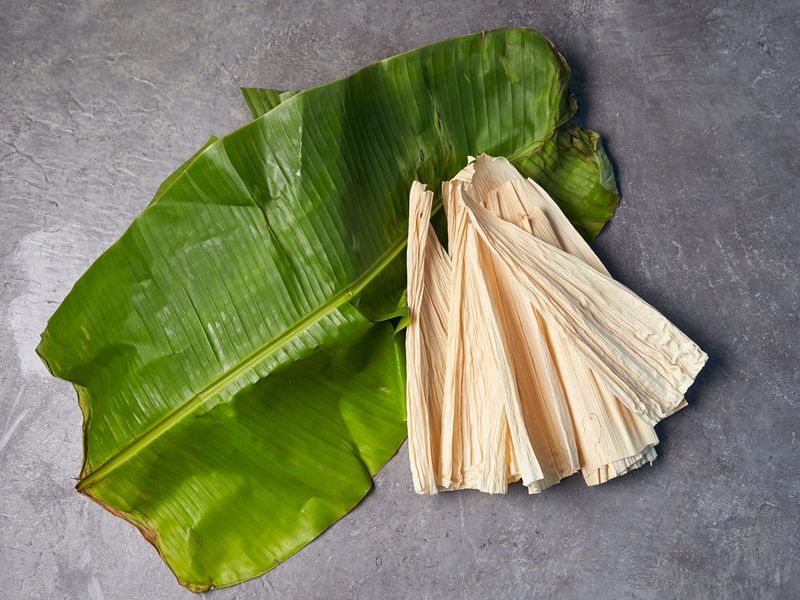
Method
Step 1: Prepare the dough
1. Softening the lard is the very first and very important step of making tamales.
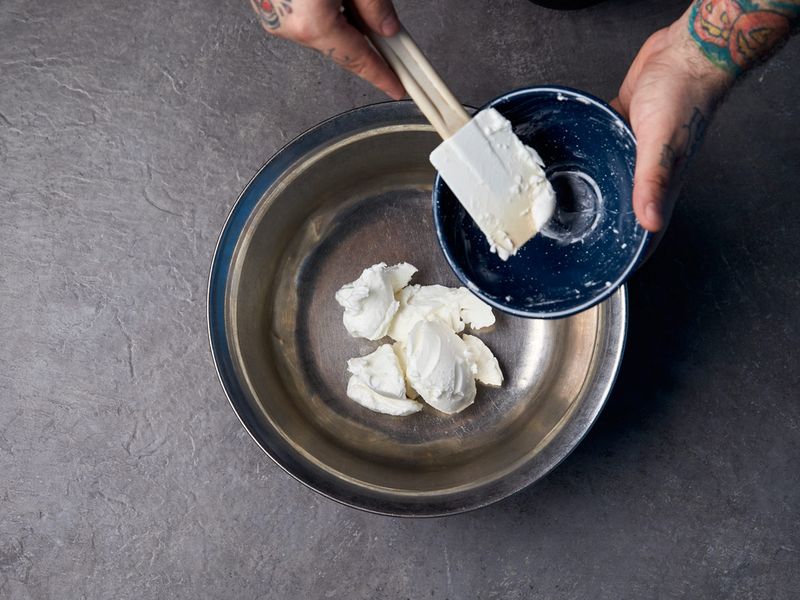
2. Use a whisk or a big spatula to stir in some air into it until the shortening turns smooth and airy, and is looser in consistency than when you started out. A 5-minute stir should do the trick.

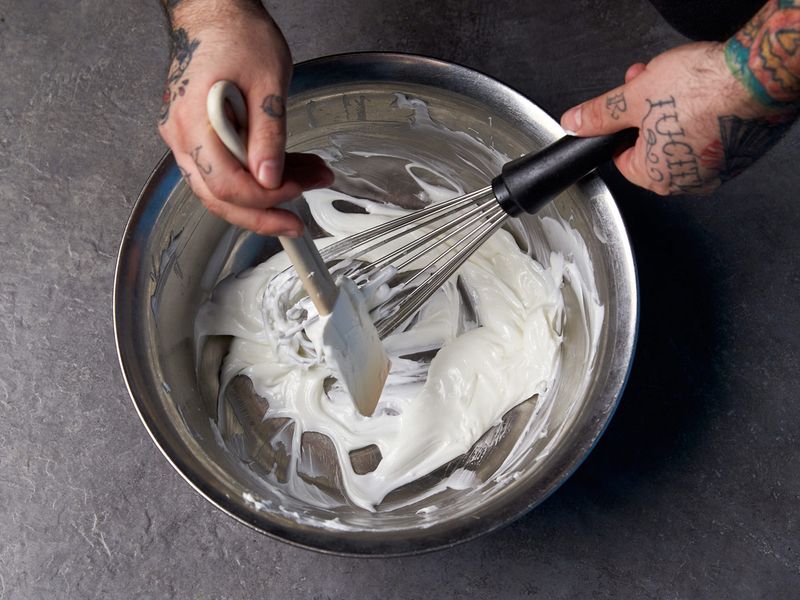
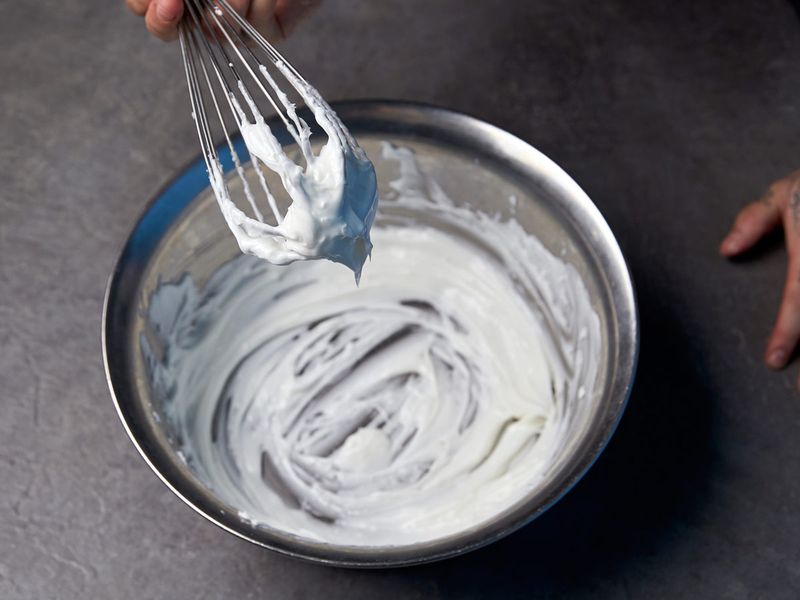
3. Then add salt and mix properly.
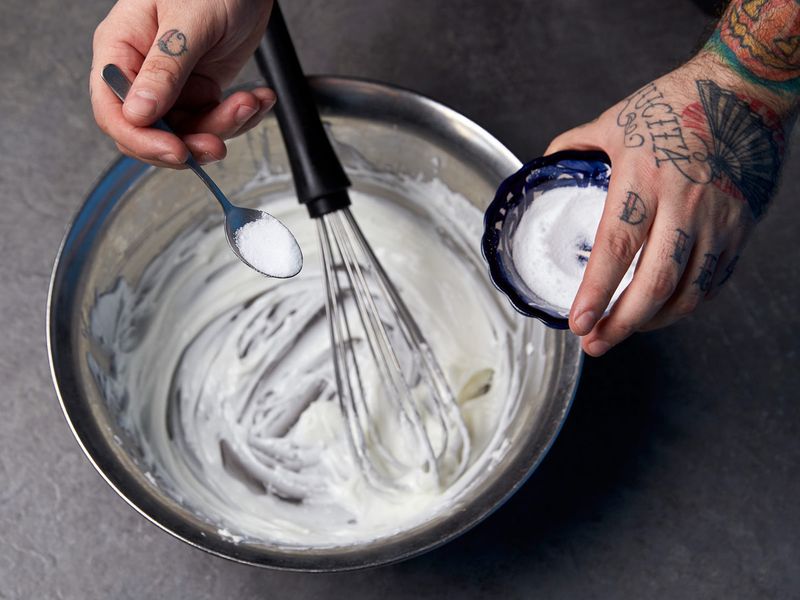
4. In a separate bowl, mix the masa flour with the baking powder.
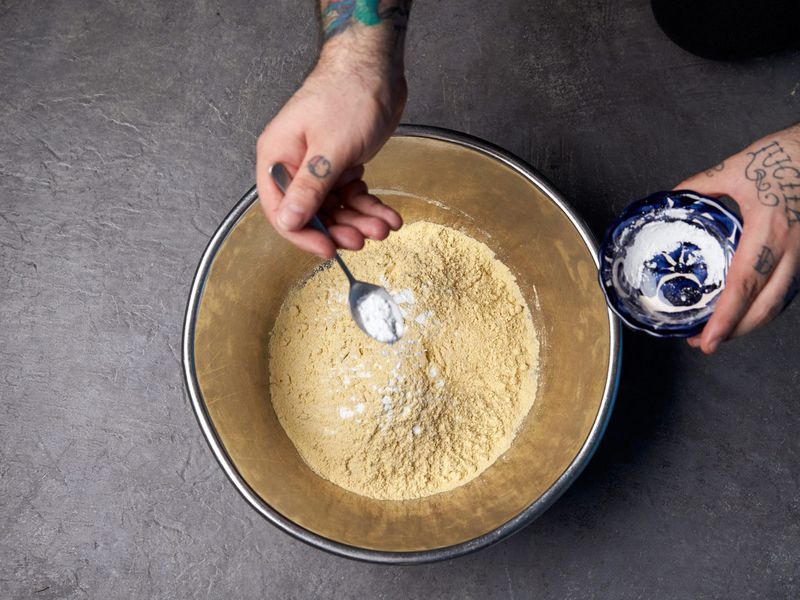
5. Then it’s time to get messy – pour in shortening and mix it up.
6. Work the shortening into the flour with your hands until it achieves the crumbly consistency of breadcrumbs.
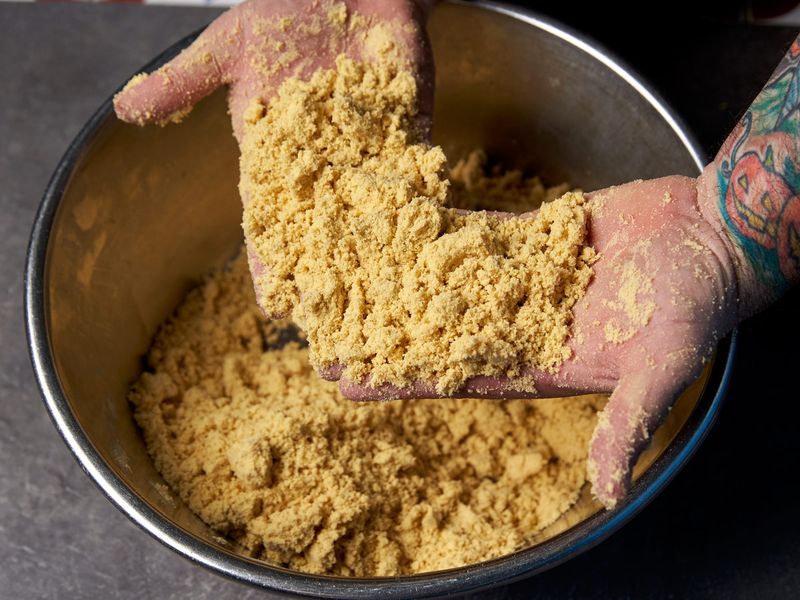
7. Then, pour in the chicken stock gently into the dough, ensuring you mix as you pour.
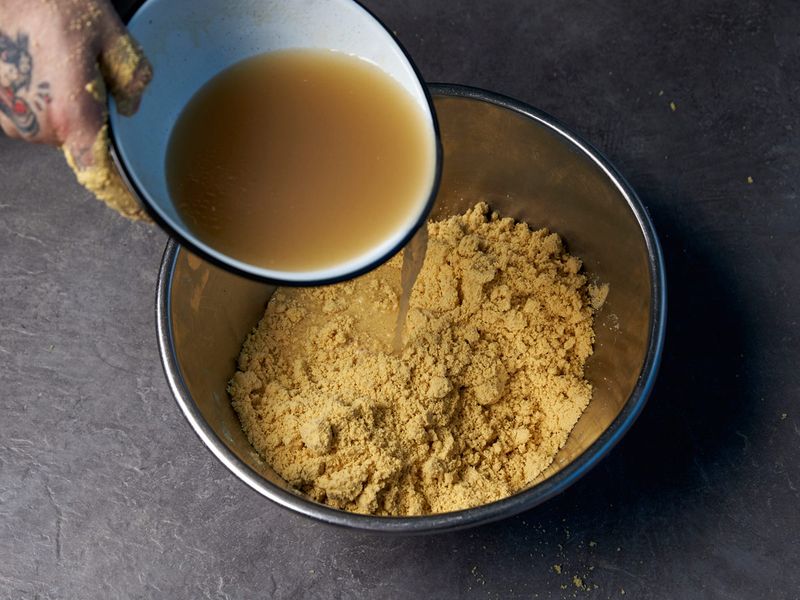
8. Be careful you don’t pour in too much chicken stock and turn the dough soft and soggy. Certain brands of masa flour tend be drier than others, and so, the amount of stock you add needs to be adjusted as per requirement.
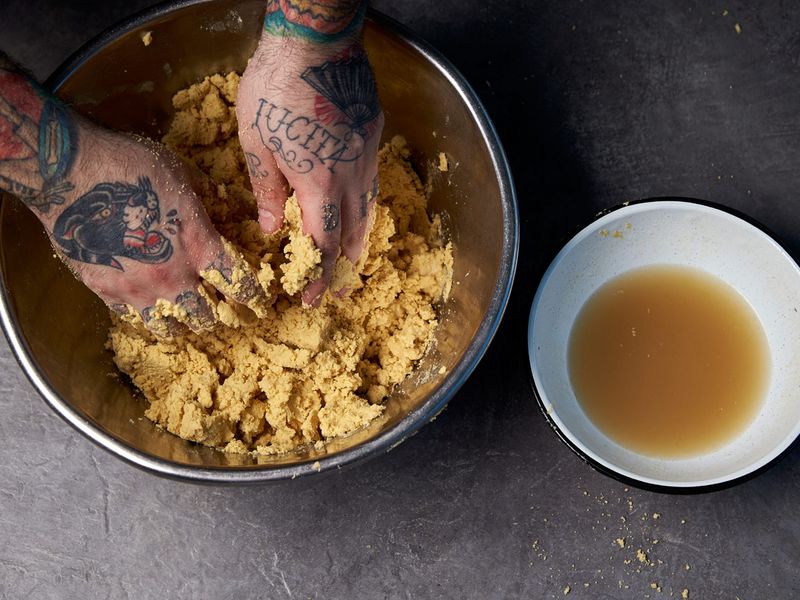
9. Knead the dough with your hands for approximately 10 minutes. Yes, a stand mixer is hassle-free but it’s easier to judge the consistency of the dough when you work it with your hands.
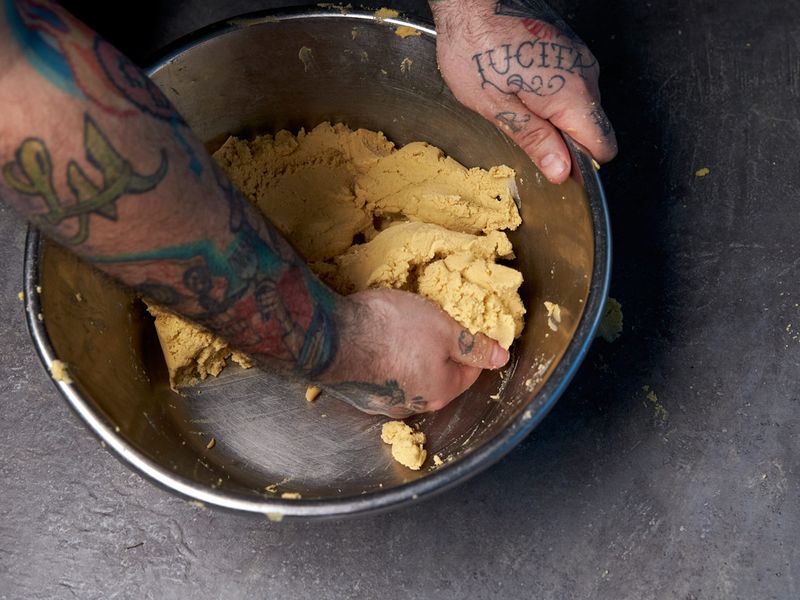
10. To check consistency, make a ball of the dough and spread it on your palm. It should be soft and easy to spread and have a paste-like texture that feels different from the elasticity of wheat dough. Think peanut butter. At the same time, ensure it’s not runny.
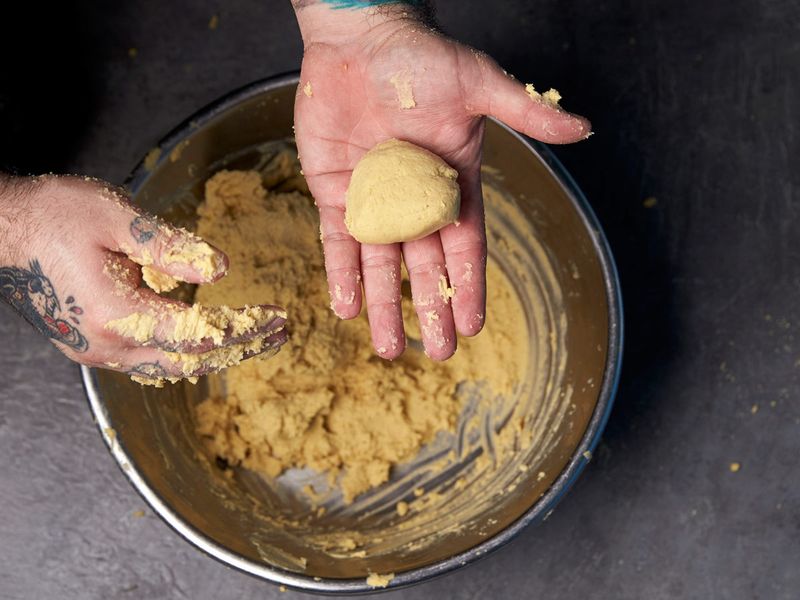
11. Let the masa dough rest and get started on the filling; cover the bowl with a wet cloth so the dough stays moist.
Step 2: Chicken in salsa verde filling
1. Heat the water in a saucepan on medium flame. When the water rolls to a light boil, add the tomatillos, garlic, serrano peppers and the onion, and let it blanch for at least 10 minutes.
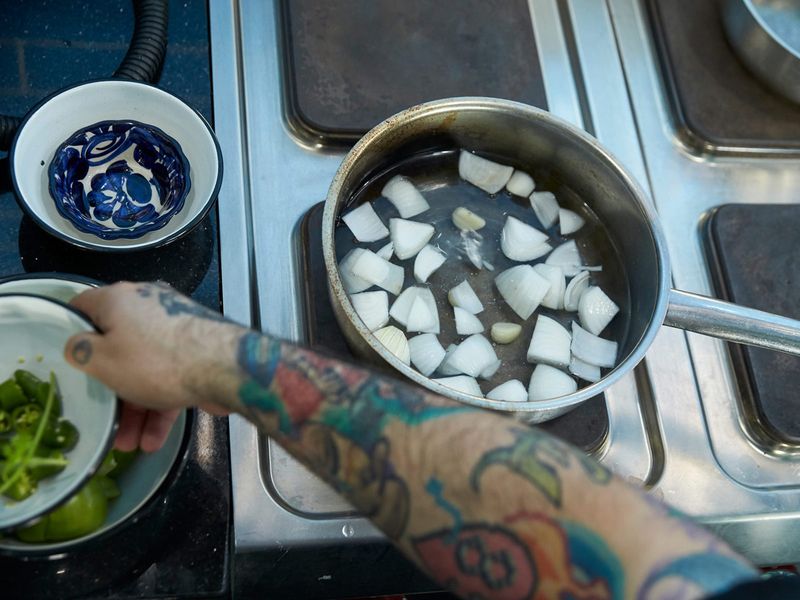
2. Blanching enhances the flavours of the ingredients. Make sure you don’t overcook the tomatillos as overcooking turns them bitter.

3. The, drain the water and once the blanched ingredients have cooled, blend them into a sauce.
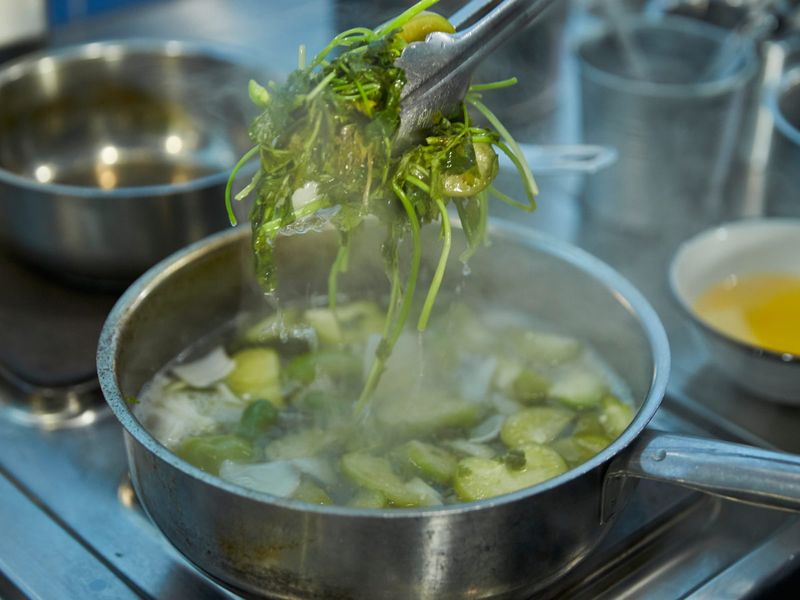

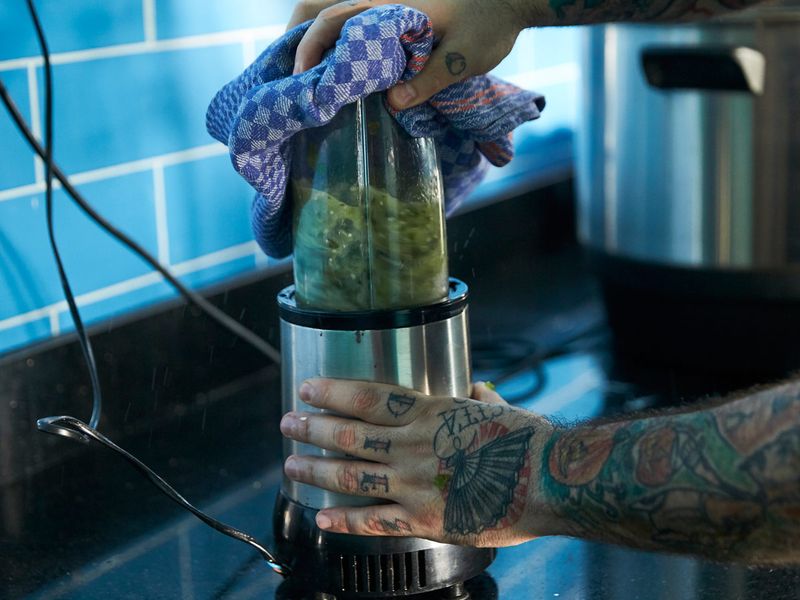
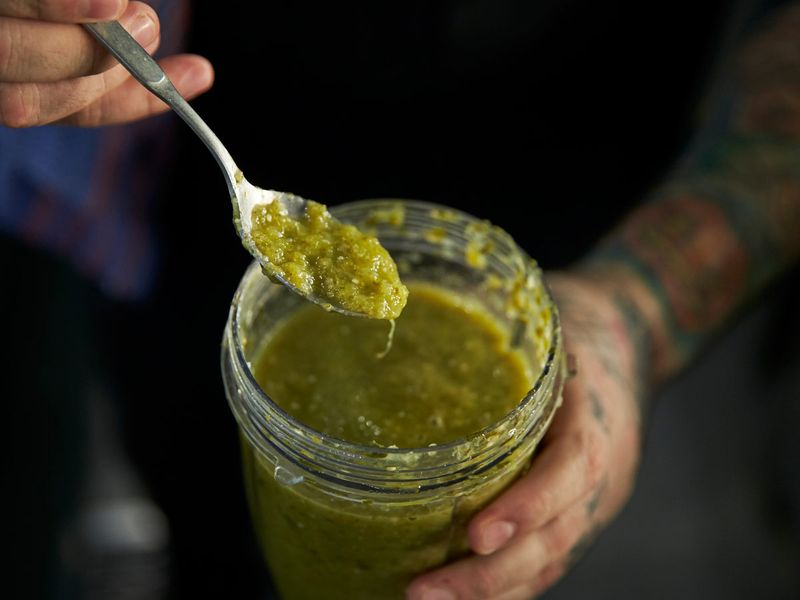
4. In a separate saucepan, heat the cooking oil on a medium flame and sauté the sauce. This helps turn the mixture silkier and emulsify the spices.
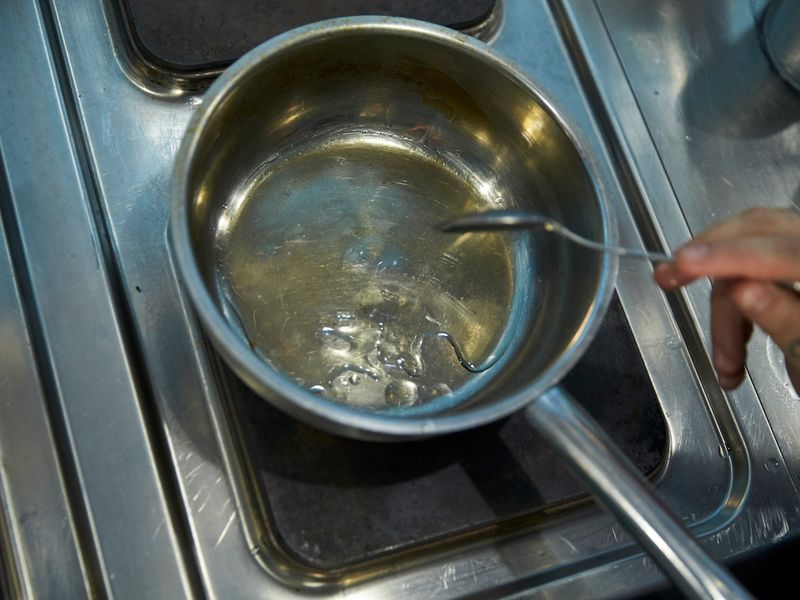
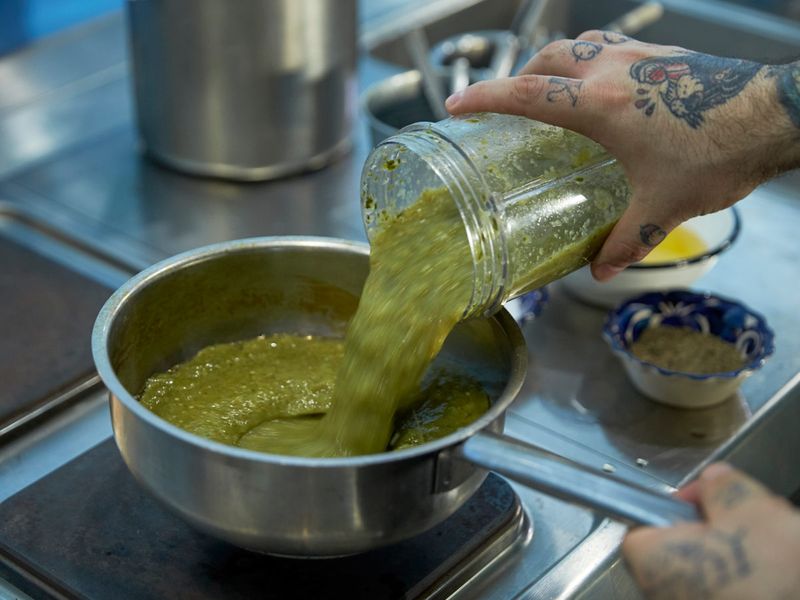
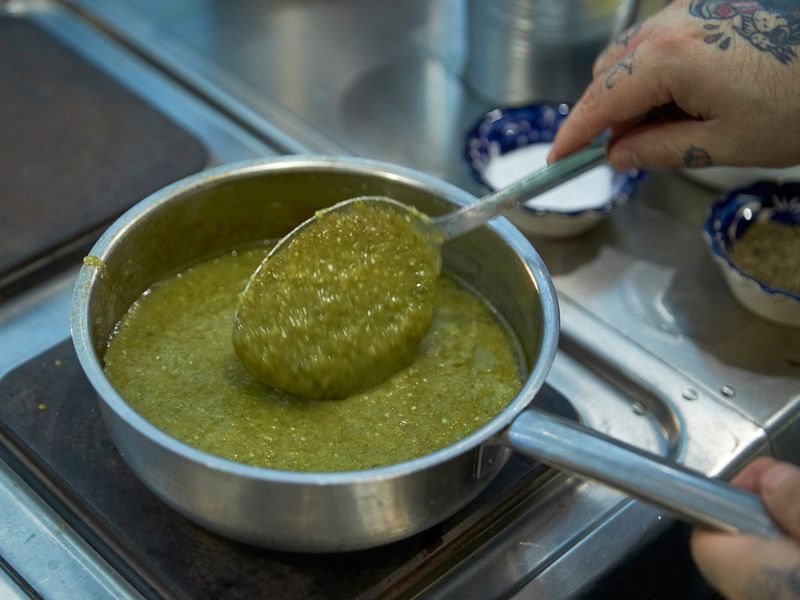
5. Season the sauce with salt and pepper, then add the shredded chicken into the sauce and stir it well.
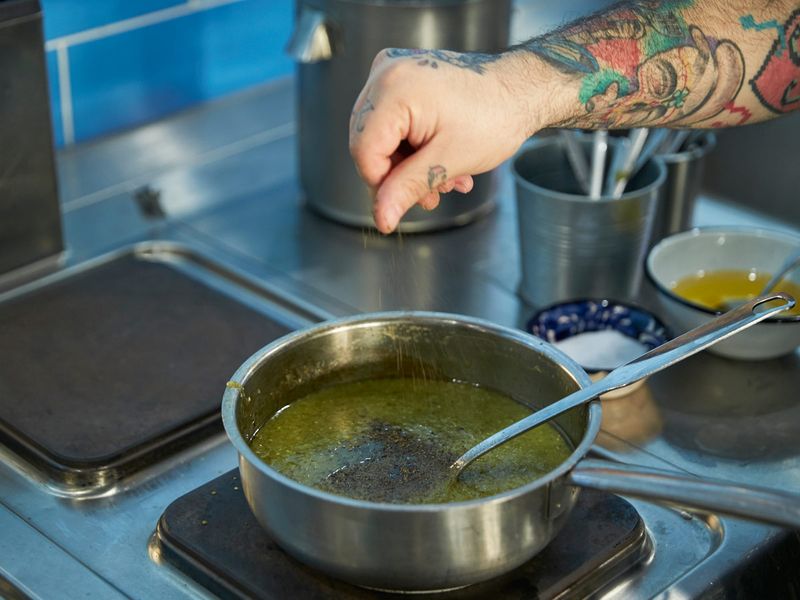
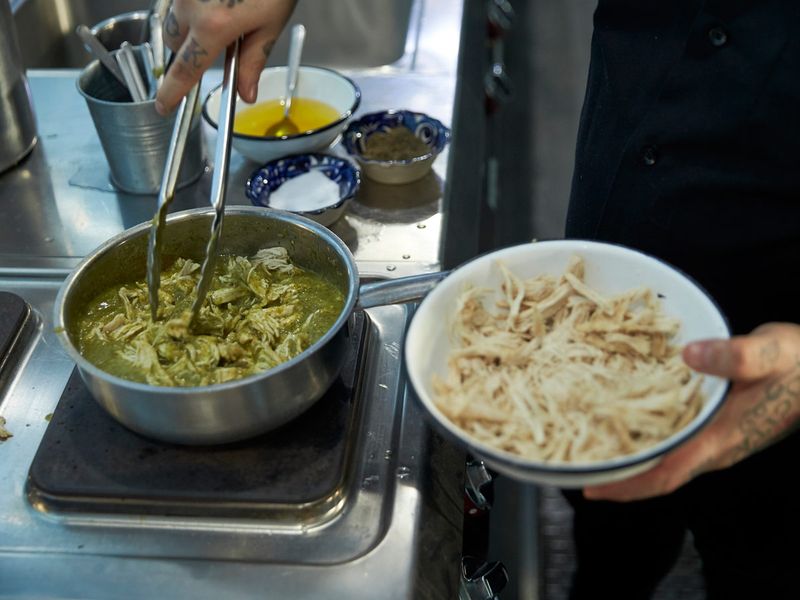
6. Leave it on medium flame for at least 15 minutes so the chicken can absorb the salsa verde’s flavour.
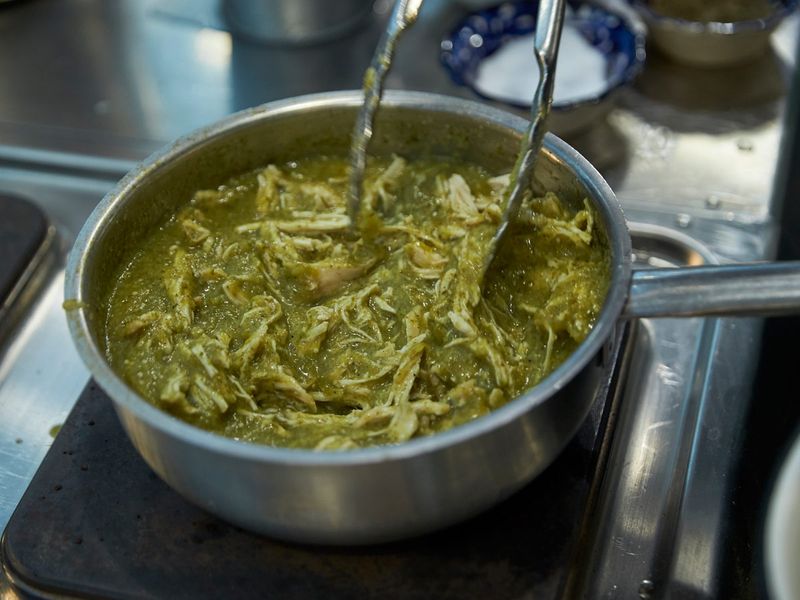
7. Remove the chicken-incorporated sauce from heat once the chicken has soaked up the salsa verde and let it cool to room temperature.
Step 3: Wrapping and folding the tamales
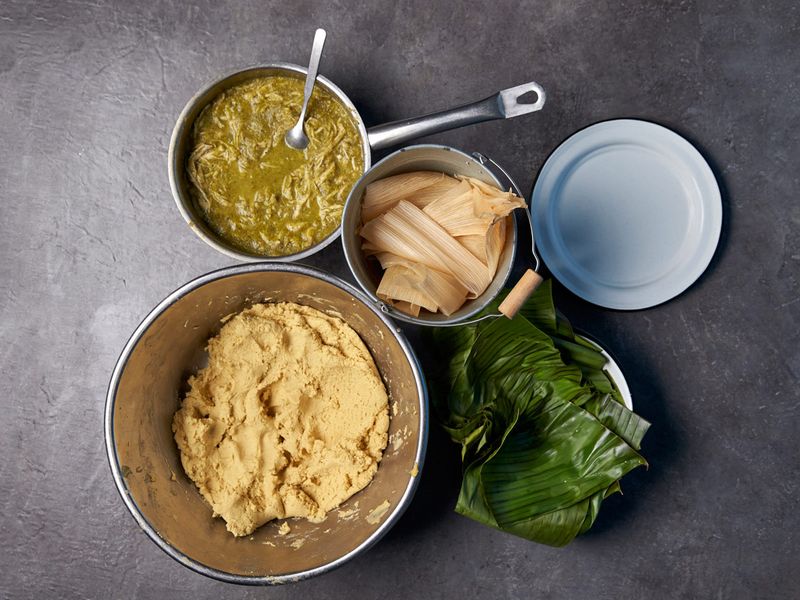
Tamales can be wrapped in either banana leaves or corn husks. The South and Central parts of Mexico lean towards the banana leaf – it helps the tamale maintain moisture and the banana leaf’s natural oils exudes a certain fragrance to the final dish.
If you’re using banana leaves to wrap your tamales, soften them by lightly heating them. This makes the leaves more pliable and prevents it from tearing while wrapping.
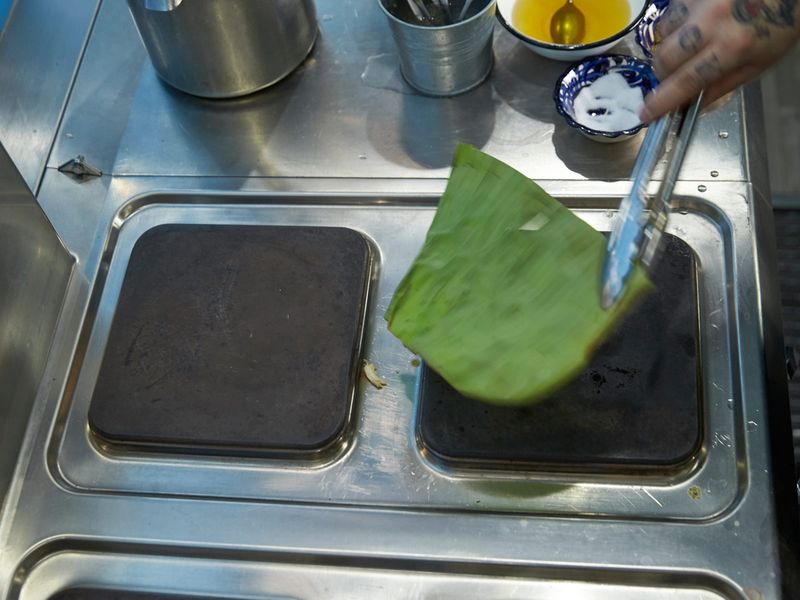
The corn husk is traditional to the north of Mexico. Your tamales might turn out a little drier but it embodies the earthy aroma of the husk. Overall, husks give better results.
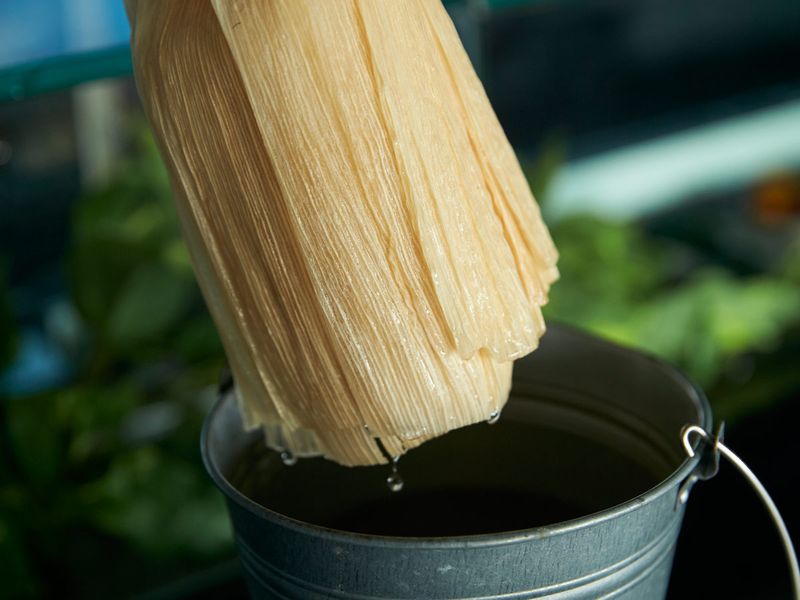
Soak your corn husks in water an hour before you use them. This helps moisten them.
Corn husk
1. Spread two spoons of the masa dough on the husk or banana leaf in a square shape measuring ½ cm thickness. Ensure there’s space between the dough and the edges of the husk and that the dough is spread evenly without any gaps. This prevents the filling from leaking.
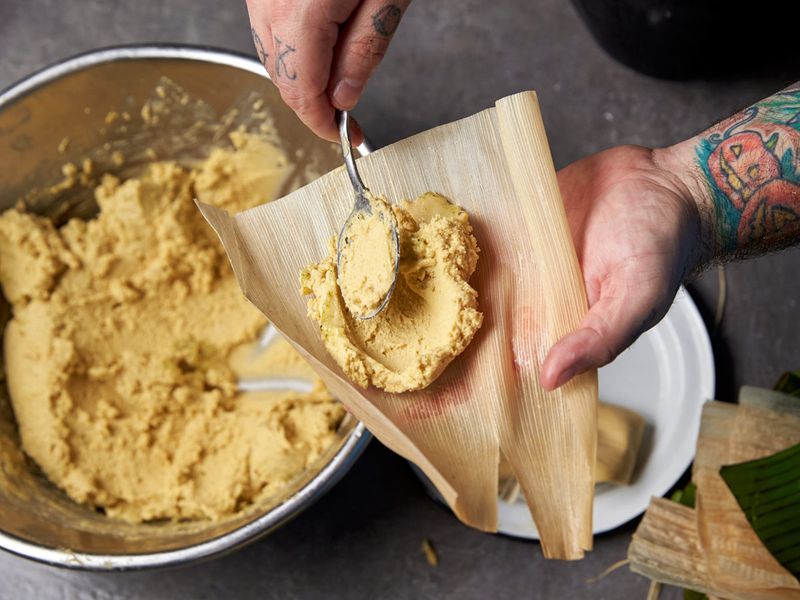
2. Add ½ a tablespoon chicken in salsa verde filling in the centre and spread it a little bit but ensure it doesn’t spill over the edges of the dough.
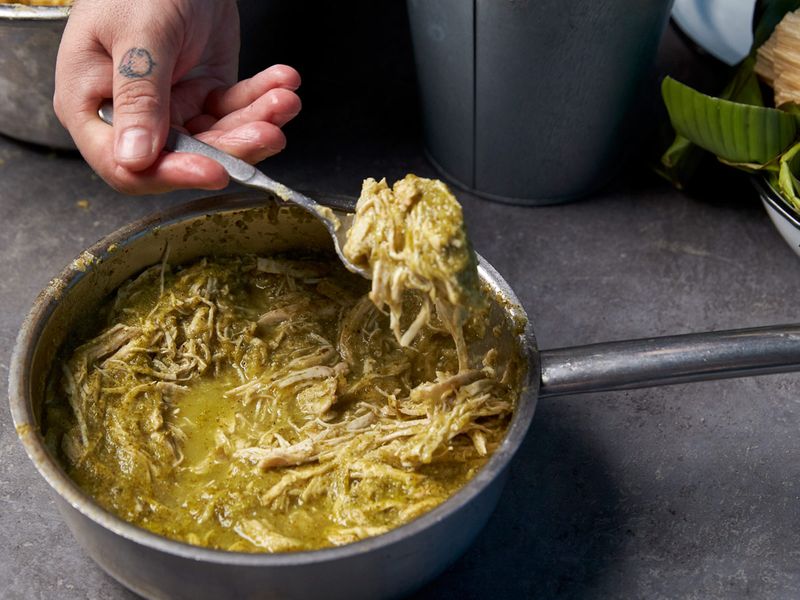

3. Fold the tamales lengthwise edges of the husk over the filling. Then fold the husk breadthwise. Tuck in the narrow edge first, the fold up the wider edge.
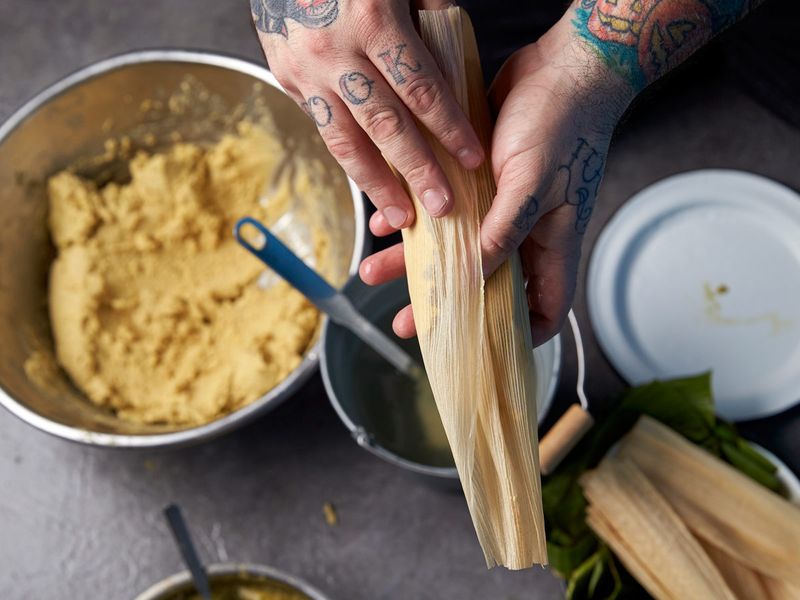
4. Then fold the husk breadthwise. Tuck in the narrow edge first, the fold up the wider edge.
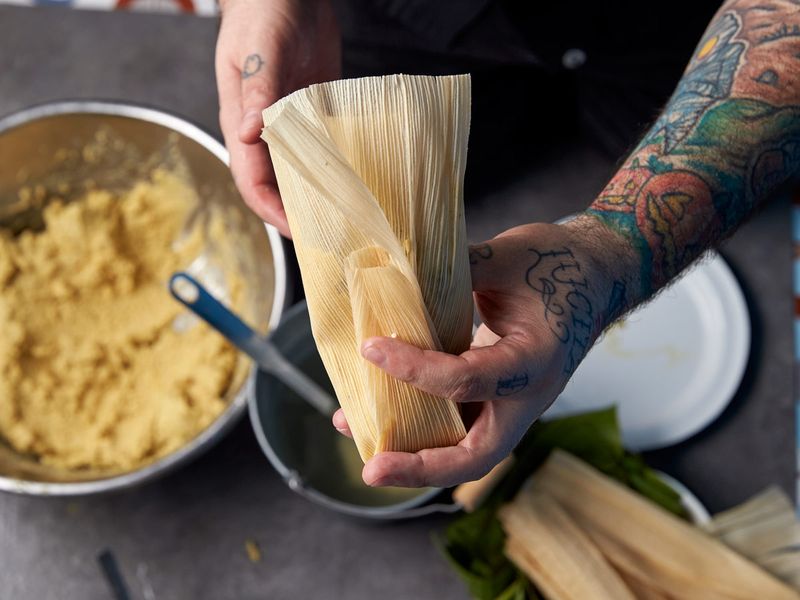
5. Tie the corn husk packet with twine or strips of fibre from a separate corn husk.
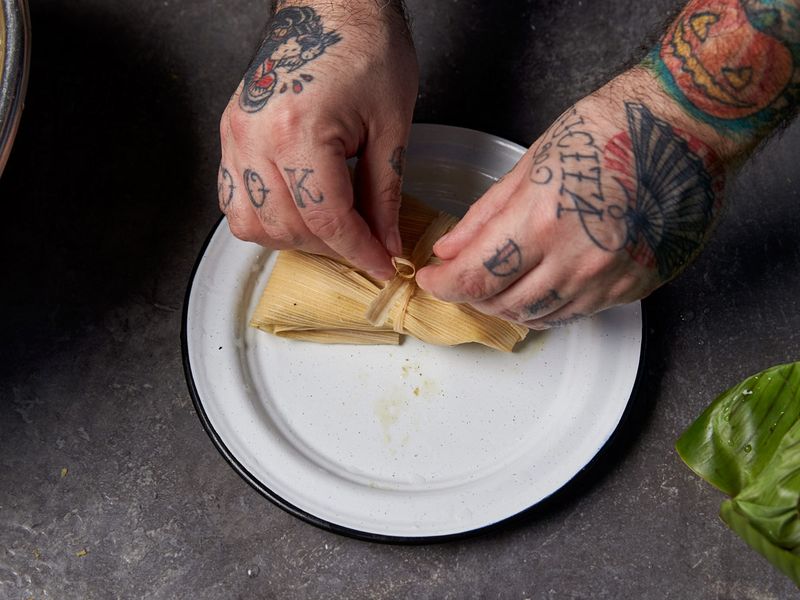
6. Repeat the process with remaining corn husks.
Banana leaves
1. Split the banana leaf into half through the spine, then split each half into quarters. Trim any frayed edges so they’re neat and straight.
2. Spread two spoons of the masa dough on the husk or banana leaf in a square shape measuring ½ cm thickness.
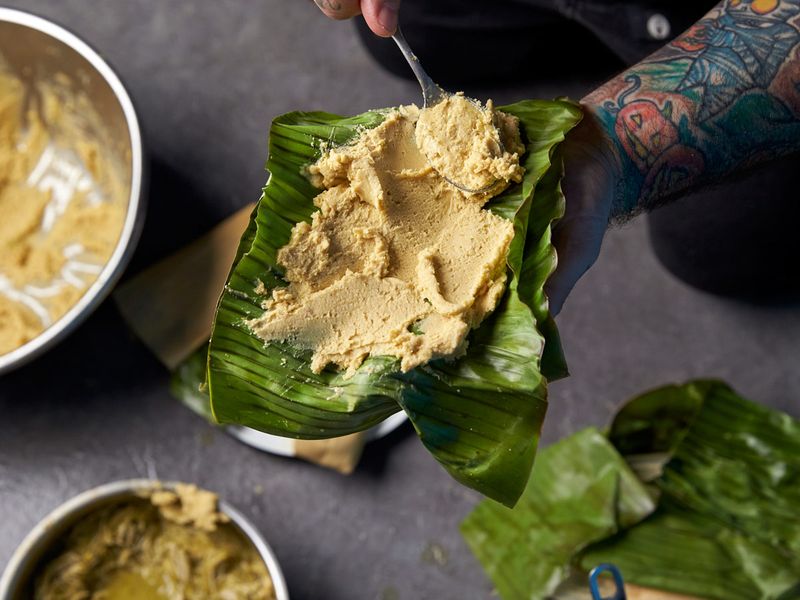
3. Then spread half a tablespoon chicken in salsa verde filling in the centre and spread it a little bit but ensure it doesn’t spill over the edges of the dough.
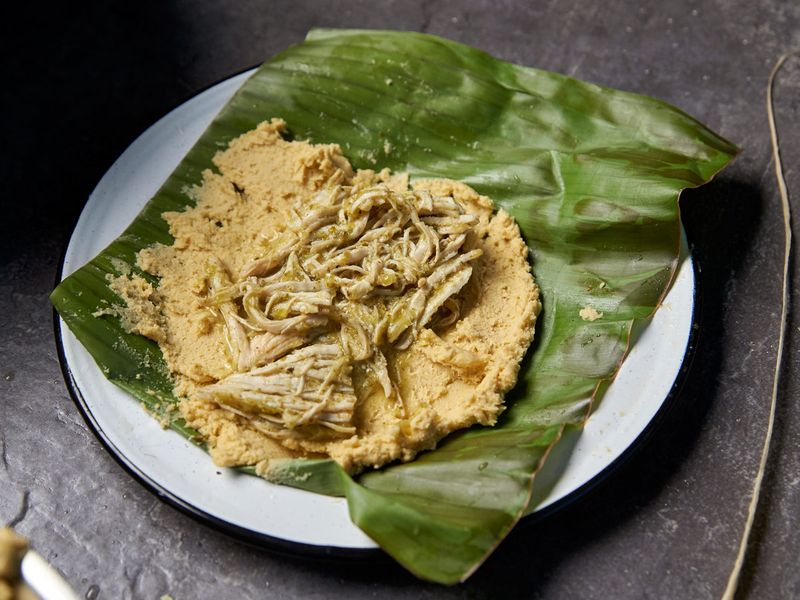
4. Fold the leaf lengthwise, tucking one edge over the other
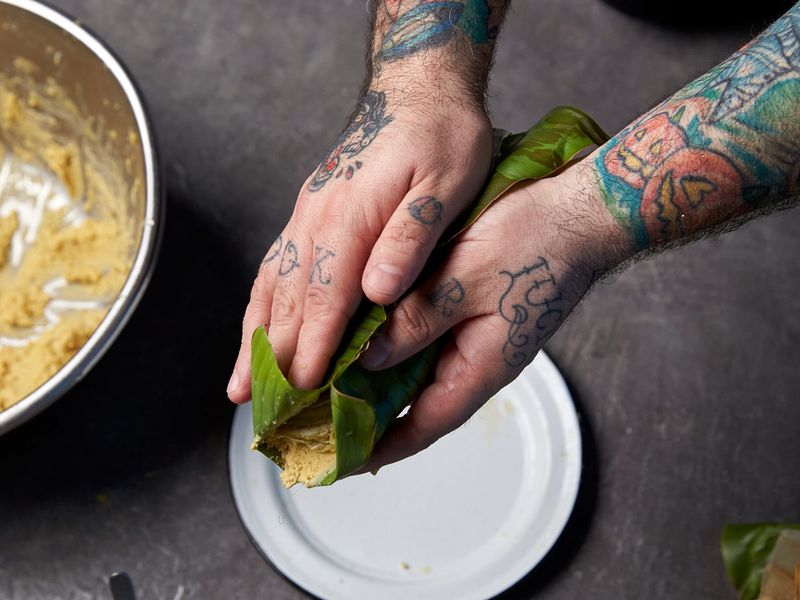
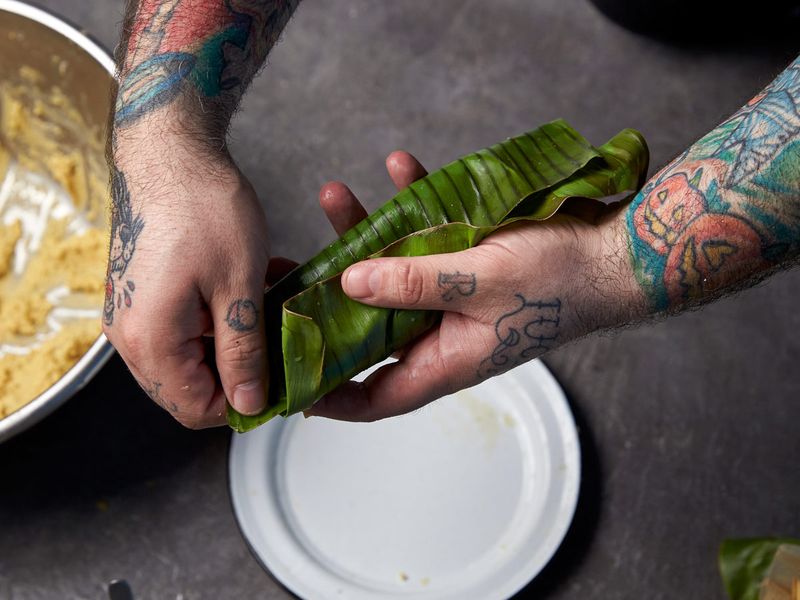
5. Then fold up the shorter edges upwards.
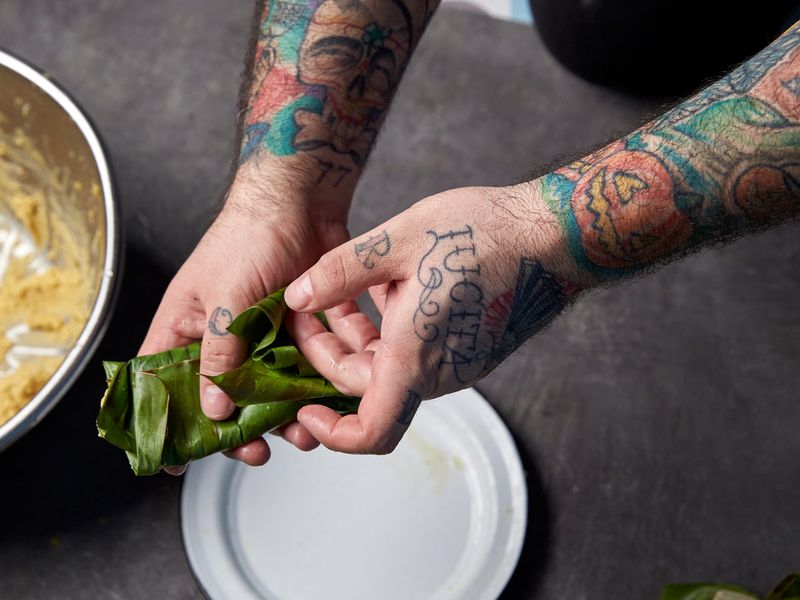

Step 4: Steaming the tamales
To cook the tamales, use a steamer or a large stockpot with a strainer placed over it.

If it’s a corn husk tamale, keep them standing vertical, balanced on the short edge. Tamales wrapped in banana leaves can be laid flat, seam side down.
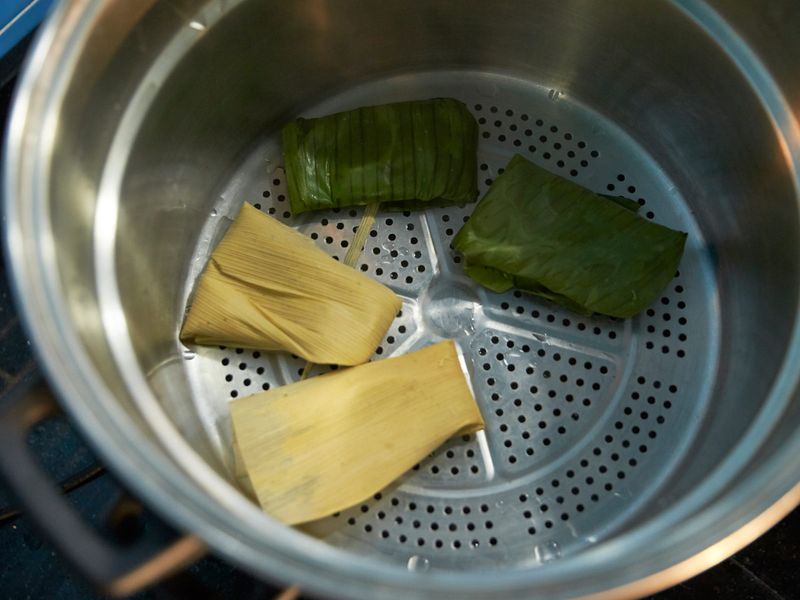
Steamer: If using a steamer, fill the steamer with tamales, cover the top with a wet cloth and pop the lid on. An idli steamer works just fine too.
Stockpot: If using a stockpot, fill the stock pot with enough water to cover the pot’s base, then place the tamales on the strainer.
Let the tamales cook for at least 45 to 55 minutes.
Step 5: After cooking
Your tamales are ready when you can easily unwrap the husk/leaf from the masa.
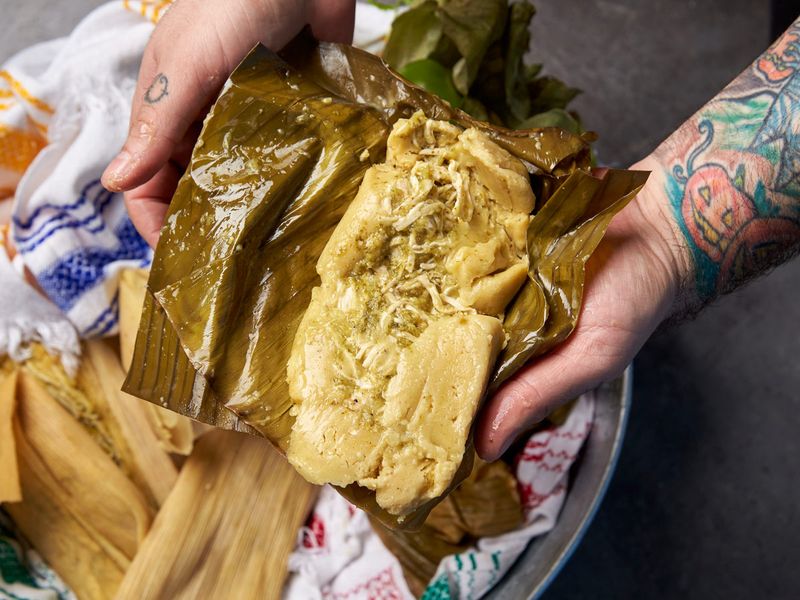
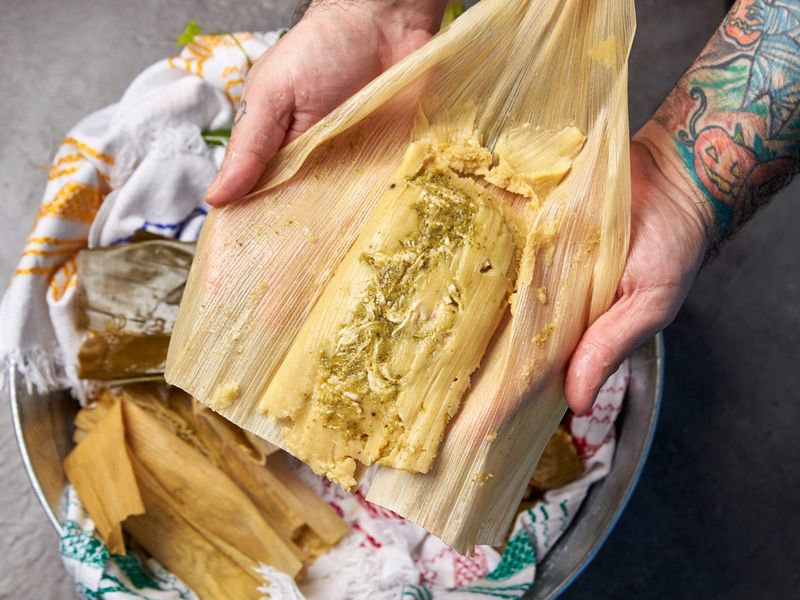
Once cooked, it’s very important to let the tamales rest for at least 40 minutes to help the cooked dough set and hold. Or else they tend to be mushy and fall apart.
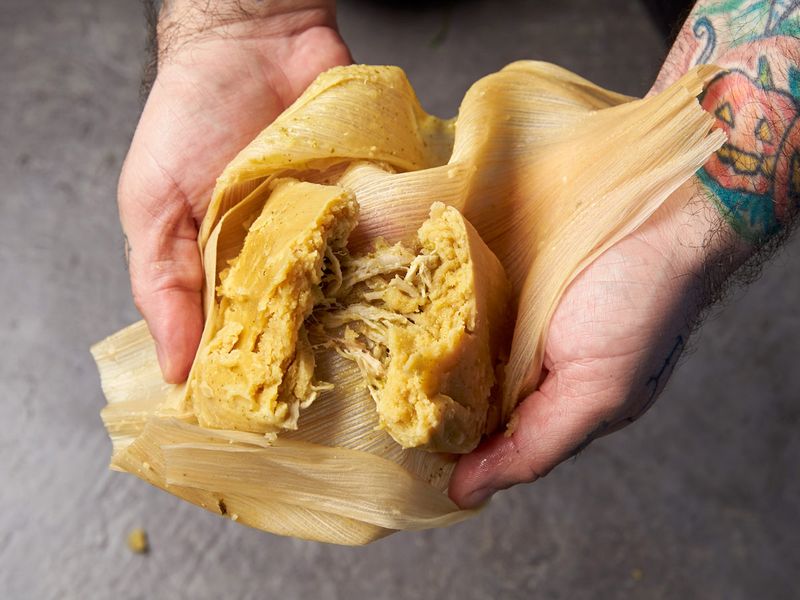
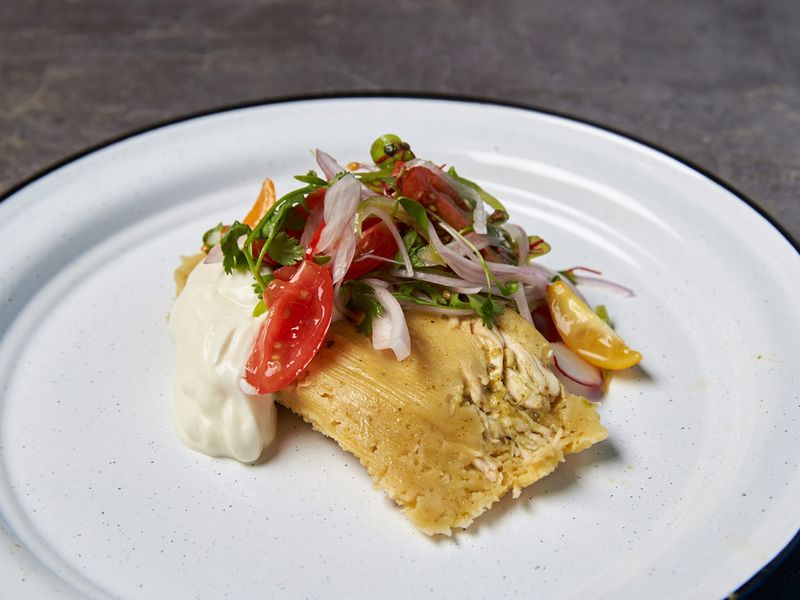
Serve hot with sour cream, habanero chillies and salad.
Note: This article was first published May 2021.
Tell us about your favourite dishes or recipes at food@gulfnews.com



